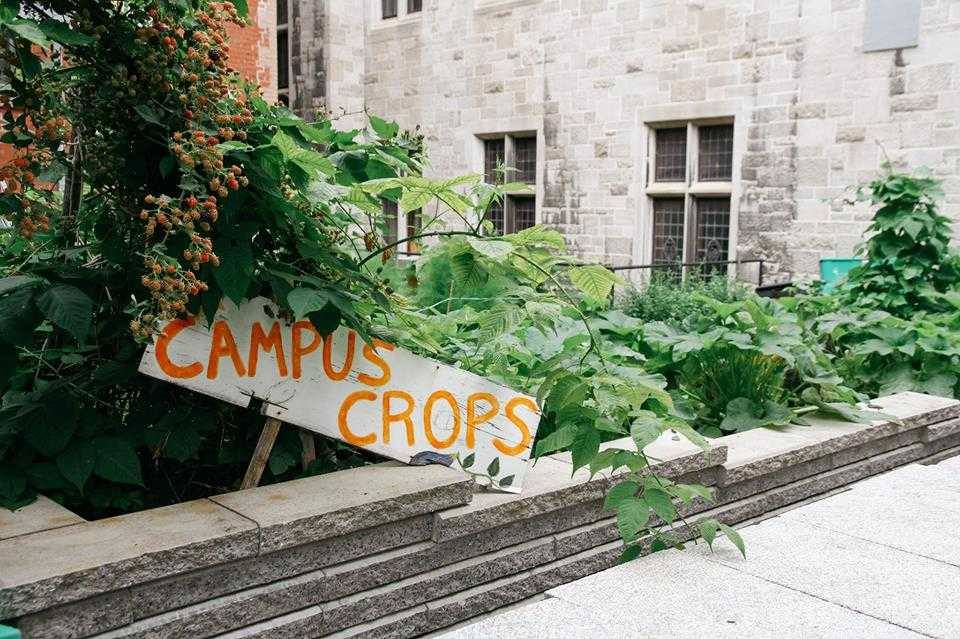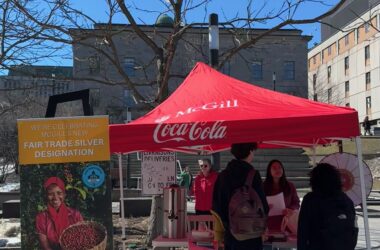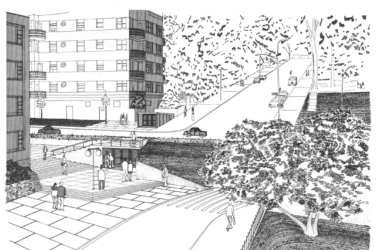Spring is blooming, and, with it, so are McGill’s many gardens. McGill’s Downtown campus has over 12 gardens; however, many students will typically rush past them without stopping to enjoy the flowers and produce grown on campus. These urban gardens do not just incorporate nature into McGill’s urban campus, but they also function as learning aids for the McGill and greater Montreal communities.
Gardening has certain benefits, such as alleviating stress, improving mental health, and allowing gardeners to become part of a communal environment. According to Amelia Peres, Sustainability Strategy Administrator for the McGill Office of Sustainability, the gardens serve three main purposes for the McGill community.
“The gardens add a lot of life, greenery, and colour, but they are also a really nice way for people to get engaged with sustainability in a tangible way,” Peres said. “The gardens help [people] make good connections. [For example], staff gardens help staff to meet each other, along with integrating student volunteers to build really strong relationships that otherwise wouldn’t exist.”
Each of the gardens at McGill serves a different purpose. Some, like the Ecole Garden and Education Outdoor Eco-Learning Garden, are part of learning and teaching initiatives and others are agricultural, such as the Campus Crops plot. One of the most prominent produce gardens on campus is the Edible Campus Area, a space designed to grow fruits and vegetables with minimal environmental impact. The space surrounds the Burnside Building and was originally a collaborative project between the McGill School of Architecture’s Minimum Cost Housing Group and Santropol Roulant, a Montreal community group that runs a number of volunteer-run programs including Meals on Wheels and farmers’ markets. Two years ago, Santropol Roulant returned the garden to McGill, and it has since been shared by campus groups, including the Office for Students with Disabilities and Midnight Kitchen.
Some gardens on campus, such as the Robertson Herb and Scent Garden, are designed to facilitate the process of pollination. In the warmer months, students can observe flocks of butterflies. Others are more education-focused, in order to teach skills related to gardening and to serve as places to share tips and ideas in a communal setting.
“SSMU Daycare’s garden is educational,” Peres said. “This particular garden is about getting the kids into the garden to talk about the benefits of gardening and being outside. Gardening is a really cool way for the kids to learn skills that they can use at other times in their lives.”
While gardening has many functional purposes, it also provides an ideal setting to relax and connect with nature. According to Peres, one of the best places to decompress is the Robertson Herb and Scent Garden, a hidden gem buried between the Davis and Hosmer Houses. The garden organizes its planters into the shape of petals, so that from above, the garden looks like a plant. Nearby is the Downtown campus’ very own secret orchard where students can pick their own apples and pears off of the trees.
For students looking to do more than just smell the flowers, they can get involved by volunteering at a garden or starting their own. As some students move away from Montreal for the summer, many on-campus sites are looking for new volunteers, especially since gardens need extra care and attention in the warm months. Campus Crops is currently looking for new students to get involved to help garden the incoming produce, in addition to Midnight Kitchen.
“The two gardens that are in need of the most students right now are the Midnight Kitchen Garden and Campus Crops. If students are interested in volunteering, they can email them directly,” said Peres. “No prior experience is needed, just excitement.”









